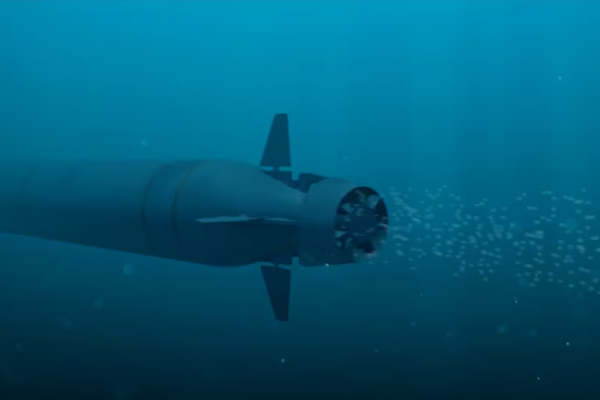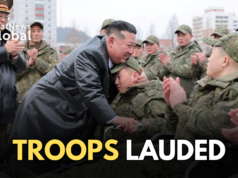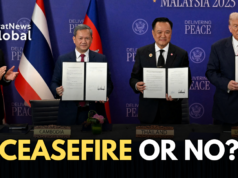
The world is yet to figure out exactly what Donald Trump meant when he posted last week on Truth Social that “Because of other countries testing programs, I have instructed the Department of War to start testing our Nuclear Weapons on an equal basis.”
The New York Times speculated that “on an equal basis” means he will test missiles or undersea assets rather than a nuclear weapon. Testing of unarmed missiles is something the US routinely does.
It also speculated that Trump was responding to Russia’s recent test of a nuclear-powered and nuclear capable cruise missile and a nuclear torpedo called the Poseidon. Neither weapon is new with President Putin having them displayed during Trump 1.0.
Was Trump then responding to pressure from within to resume testing given the modernisation of the nuclear arsenal that is underway? Or was it done with an eye on the 95 days left for the expiry of New Start, the last major nuclear arms control treaty between the US and Russia?
The NYT report said the treaty limits both countries to 1,550 deployed nuclear weapons, and while it cannot be renewed, Putin has suggested they informally observe it for a year and in the interim perhaps explore a replacement treaty.
Should China be part of the negotiations? Currently it has nuclear weapons numbering in the hundreds but it is estimated that by 2035, it may have as many weapons as the US and Russia. China may prefer to wait it out for now.
It’s also interesting to note that the Los Alamos National Laboratory in New Mexico, which is responsible for designing and producing nuclear weapons and addressing nuclear threats, is in the middle of a $1.7 trillion modernisation project.
The modernisation, according to another NYT report, covers “revitalizing missile silos burrowed deep in five states, producing new warheads and arming land-based missiles, bombers and submarines.”
The million dollar question is whether testing will generate any new data? In an interview to NPR.Org, nuclear weapons scientist Don Haynes of the Los Alamos National Laboratory said “Our assessment is that there are no system questions that would be answered by a test, that would be worth the expense and the effort and the time.”
NPR.Org also quoted Paul Dean, vice-president for global nuclear policy at the Nuclear Threat Initiative, as saying that “The cost estimates I’ve seen have been around ballpark $140 million per test.”
A basic demonstration test would take around 18 months, longer if the plan is for the test to generate scientific data.
But any test would violate the US commitment to the Comprehensive Test Ban Treaty, which bans all nuclear testing whether for military or peaceful purposes. However, the US along with some others (Russia, Israel, China, Iran) has not ratified it.
Pakistan, North Korea and India have neither signed nor ratified it. India’s point is the treaty is discriminatory, does not require the nuclear-armed states to disarm and locks out other countries from developing nuclear capabilities, thereby endangering their national security.
Testing may be more helpful to countries like China, which with 47 tests behind it, could use the data to improve its existing designs. That would not help America. But these are early days yet and Trump has just got going.
Thirty eight years in journalism, widely travelled, history buff with a preference for Old Monk Rum. Current interest/focus spans China, Technology and Trade. Recent reads: Steven Colls Directorate S and Alexander Frater's Chasing the Monsoon. Netflix/Prime video junkie. Loves animal videos on Facebook. Reluctant tweeter.




